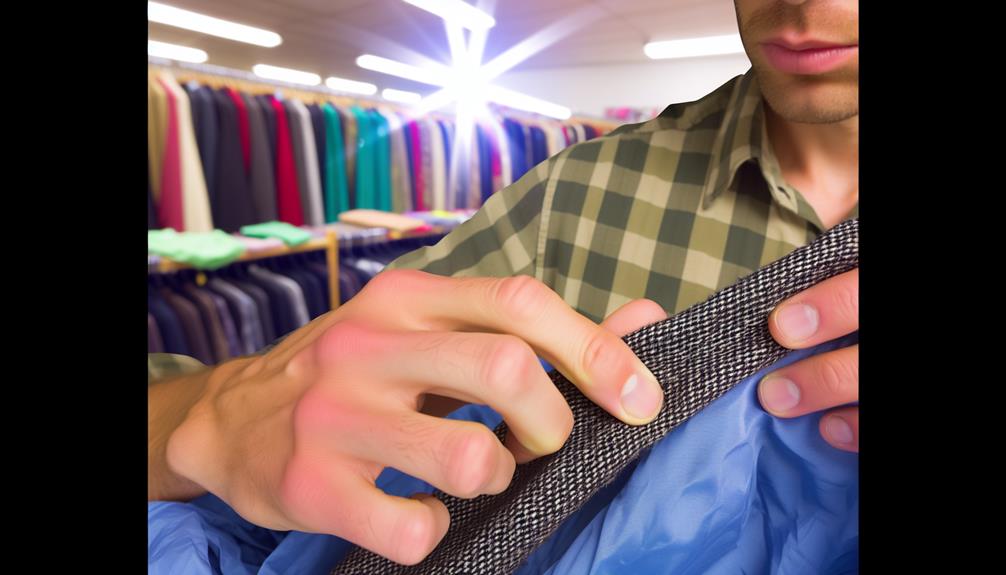
Tips for Buying Secondhand Clothing Effectively
Discover the art of snagging amazing secondhand finds with eco-friendly style and hidden gems – all while mastering the art of thrifty fashion!

When shopping for pre-owned clothing, focus on quality over quantity. Check fabrics for wear and seams for durability. Examine buttons and zippers for function. Look out for stains, tears, or odors. Test out items to guarantee they fit comfortably. Embrace timeless pieces and high-quality brands. Get ready to elevate your style sustainably!

When exploring the world of pre-owned clothing, understanding consumer behavior in the secondhand market is like deciphering a fashionable puzzle that reveals insights into sustainable shopping practices. Buyer preferences play an important role in shaping the dynamics of the market, with trends constantly evolving to meet the demands of eco-conscious shoppers like yourself.
In today’s secondhand market, buyer preferences reflect a shift towards more sustainable and ethical shopping practices. As you navigate through racks of pre-loved garments, you may notice a growing inclination towards timeless pieces, unique finds, and quality items that stand the test of time. These preferences not only cater to individual style but also promote a more environmentally friendly approach to fashion consumption.
Market trends in the pre-owned clothing industry are heavily influenced by consumer behavior. From vintage revivals to a focus on high-quality materials, the market adapts to meet the desires of buyers seeking both style and sustainability. By staying attuned to these trends, you can make informed choices that align with your values while adding a touch of flair to your wardrobe.
To understand the dynamics of the pre-owned clothing market, consider the various factors that influence used clothing sales.
Considering these factors when buying or selling pre-owned clothing can help you navigate the used clothing market more effectively.

Enhance your shopping savvy by mastering key indicators of clothing quality when buying pre-owned items. When scouring through racks of pre-loved gems, keep these shopping tips in mind to make informed purchase decisions.
Initially, examine the fabric for any signs of wear, such as pilling or thinning. Quality fabrics will retain their shape and texture even after multiple wears. Next, check the seams and stitching for any loose threads or unraveling, as this can indicate poor construction. Additionally, inspect the buttons, zippers, and other fastenings to make sure they’re secure and functional.
Another essential quality assessment tip is to look for any stains, tears, or odors that may be difficult to remove. While minor flaws can sometimes be fixed, it’s essential to factor in the cost of repairs when deciding on a purchase.
Lastly, don’t forget to try on the garment to assess the fit and overall comfort. By honing your eye for quality and following these shopping tips, you’ll be able to score fantastic pre-owned pieces that not only look great but also stand the test of time.
As you explore the world of pre-owned clothing, discover the sustainability benefits that come with choosing second-hand apparel. Embracing pre-owned fashion not only elevates your style but also positively impacts the environment and contributes to a circular economy. Here are three reasons why opting for pre-owned clothing is a sustainable choice:
Make a stylish statement while positively impacting the planet by incorporating pre-owned pieces into your wardrobe.
Considering the evolving consumer preferences and growing awareness of sustainability, the future growth prospects for secondhand clothing appear promising and impactful. Market trends indicate a significant shift towards sustainable fashion choices, with consumers actively seeking out pre-owned apparel as a way to reduce their environmental footprint. This shift isn’t only driven by a desire to make eco-conscious decisions but also by the increasing popularity of vintage and unique clothing pieces.
The economic impact of the secondhand clothing market is also notable, with projections showing steady growth in the coming years. As more people embrace the concept of buying and selling pre-owned clothing, the market is expected to expand, creating new opportunities for businesses and individuals alike. This trend isn’t only beneficial for the environment but also for the economy, as it promotes a circular fashion economy and reduces waste.

Discover the art of snagging amazing secondhand finds with eco-friendly style and hidden gems – all while mastering the art of thrifty fashion!

Prepare to conquer the pre-owned apparel market like a pro, uncovering insider secrets and tips for scoring amazing finds – dive in for a fashionable adventure!
